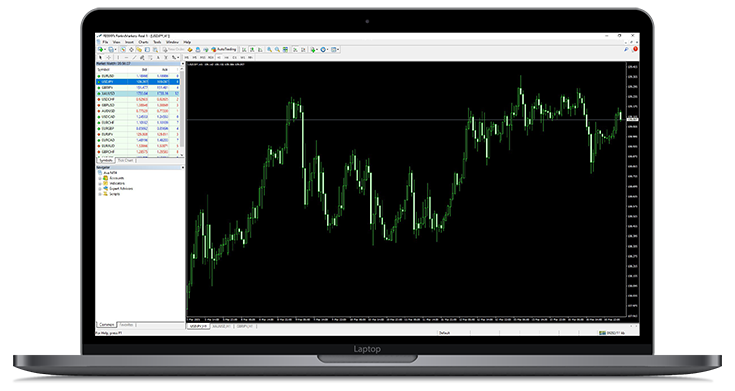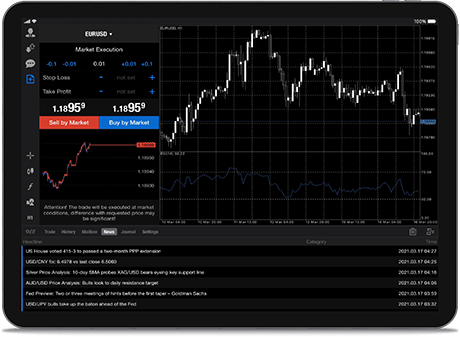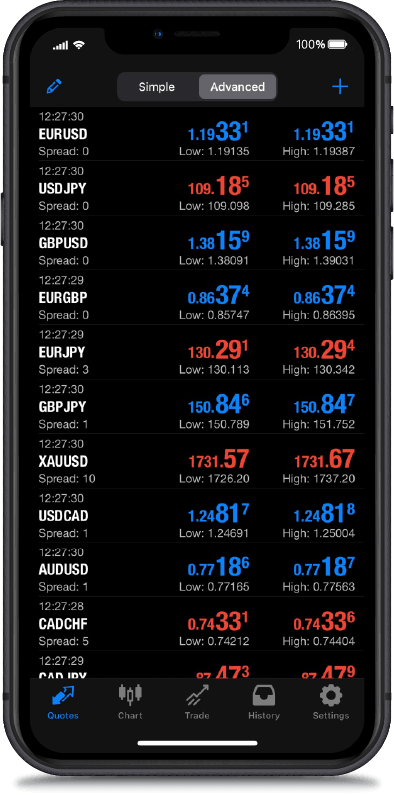A stock split is exactly what it sounds like. A company splits its stock by increasing the number of outstanding shares, while decreasing the price of each one. A share may be divided into two, three, ten or more, with the cost of acquiring one share adjusting accordingly. The total market capitalisation of the company remains unchanged.
Companies tend to perform stock splits when their share prices are high. Nvidia (NVDA) completed a 10-to-1 split in June 2024, at which time the company was trading at $1,200 per share. Following the split, each share was divided into ten shares, each worth $120. Nothing fundamental about the stock changed, merely a change of numbers.
Companies can go through multiple rounds of stock splits. In fact, since going public in 1999, Nvidia has completed six separate stock splits, dividing one share at launch into a total of 480 shares today. The chipmaker is by no means an outlier; Home Depot and McDonald’s have undergone 13 and 12 stock splits respectively in their time.
Stock splits have been around for a long time. The first examples, according to modern definitions of such, date back to 1916. American Can and American Tobacco both performed a stock split that year, following the same reasoning still used to this day: to make their shares more accessible to the average investor. Over a century later, the trend is still going strong, and by and large follows the same logic.
Why do companies perform stock splits?
The argument is that acquiring a share is more difficult for an average investor if the price tag is too high. Many stocks had a large barrier to entry because of this, which excluded a number of buyers. Even among those who could afford to buy higher-priced stocks, the perception that the company represents some kind of luxury good can deter some investors. By bringing their price down to more reasonable levels, the shares become more available, thereby expanding the potential pool of buyers. Moreover, a greater number of lower-priced shares results in greater liquidity, which may narrow the bid-ask spread, making life easier for buyers and sellers alike.
Things changed considerably in late 2019, when Robinhood introduced fractional trading to its customers, allowing people to buy fractions of a share in a given company. Other competing platforms quickly implemented similar solutions, and over the past five years fractional trading has become widely available.
As a result, the process of splitting a stock now makes a lot less sense than it once did. This begs the question of why Nvidia bothered to do one last year. If investors are free to buy only a fraction of a share, what is the point of a stock split? The answer is in fact mostly psychological. On a basic level, if a company is undergoing a stock split, or even thinking about one, it is because their share price has appreciated significantly in recent times, which is an obvious selling point for the stock itself, one that may potentially attract new investors. Such a factor certainly plays a role, but there is also a much deeper element at play: the notion of perceived affordability.
Reverse stock splits
As an aside, stock splits can also go the other way, consolidating a large number of shares into fewer, reducing the amount of shares outstanding. Such events are known as reverse stock splits, and typically occur when a company is in trouble. While a regular stock split is good publicity, a reverse stock split is generally a red flag.
If a stock continuously underperforms, its share price may fall below the minimum price requirement of the exchange, meaning the stock will get delisted if stays too low for too long. For example, the New York Stock Exchange maintains a strict $1 price threshold, below which the associated company will eventually receive a deficiency notice.
One of the most famous examples of a reverse stock split is the shipping company DryShips Inc (DRYS), which completed no fewer than eight such operations between 2016 and 2017. The company performed split after split in an attempt to counter the stock’s shockingly bad performance, desperately trying to remain listed on the stock exchange. The successive consolidations made for a combined reverse stock split of 1-to-11,760,000 shares. At one point, the company was facing ten separate class-action investor lawsuits, with accusations ranging from stock manipulation to violating American securities laws.
Investment psychology
For reasons that have nothing to do with logic, investors are more comfortable investing in assets when they lie within a specific price range. A high price tag can scare people away because they think that it is a sign that something is overvalued. The assumption is that an asset worth $1,000 must be overvalued compared to one that is only worth $3, and therefore the latter is a better investment. Such an argument is obviously nonsensical because it ignores the market cap of the company.
Sticking with chip manufacturers, let us compare Nvidia (NVDA) and Advanced Micro Devices (AMD). Nvidia has a share price of $177; AMD has a share price of $217. Is AMD “worth” more than Nvidia? Of course not, because Nvidia has over 24 billion shares outstanding, granting the company a market cap of $4 trillion, whereas AMD has just 1.6 billion shares outstanding, granting the company a market cap of $350 billion.
Most people in investment circles are obviously aware of how market cap works and why investing in assets based on price alone is silly. But a small part of our brain sees the high price tag and gets skittish. Multiply that niggling feeling by the millions of people who subconsciously experience it, and suddenly there is a very real, tangible effect.
The same phenomenon is arguably more pronounced in cryptocurrencies, which, to put it mildly, has its fair share of inexperienced market participants. People flock to “lower priced” coins for no other reason than the price tag, blissfully unaware of the concept of market capitalisation. To each their own.
The point is, companies are wise to this effect. Companies will initiate stock splits in order to bring their share price right down to the sweet spot, whether they publicly admit it or not. Many cryptocurrencies are guilty of the same. There are costs associated with performing a stock split, including legal fees and administrative work, so the fact that companies will pursue such ventures, despite the cost of doing so, points to the lucrative nature of these operations.
A stock split attracts a lot of attention. A share price going up so much that the company has to undergo a split? What is not to like? The hype surrounding such an event does indeed typically result in a surge of interest, and a rise in price. Such effects are meticulously monitored and studied, with many believing the $30 to $300 range being ideal in terms of optics for potential buyers. $1,000 price tags put people off just as much as sub-$1 prices. Interestingly, the acceptable range appears to vary by region, with different parts of the world preferring different price bands.
If investors acted purely on logic, the price of a stock or crypto would not matter at all – market cap would be all that mattered. Unfortunately, we are not as clever as we think. Perception matters more than we would like to admit. With that said, some stocks are completely immune to such notions, such as Berkshire Hathaway, whose class A shares have never undergone a single stock split since their initial listing in 1988. BRK.A hit a share price of over $800,000 earlier in the year. That is not a decimal point. Eight hundred thousand dollars per share.
The argument that markets are irrational is one that needs little justification; it is obvious for all to see. Stock markets, and financial markets in general, are a collection of human emotions. As the saying goes: “Markets can remain irrational longer than you can remain solvent.”
The quote is attributed to John Maynard Keynes, renowned economist, who despite his expertise, lost significant amounts of money in the 1920s. Keynes would eventually learn his lesson, pivoting his bets towards much longer time frame plays. He would go on to run the endowment for King’s College, Cambridge, consistently beating the market, year after year, for over two decades. Reality usually catches up; it just takes a while.










